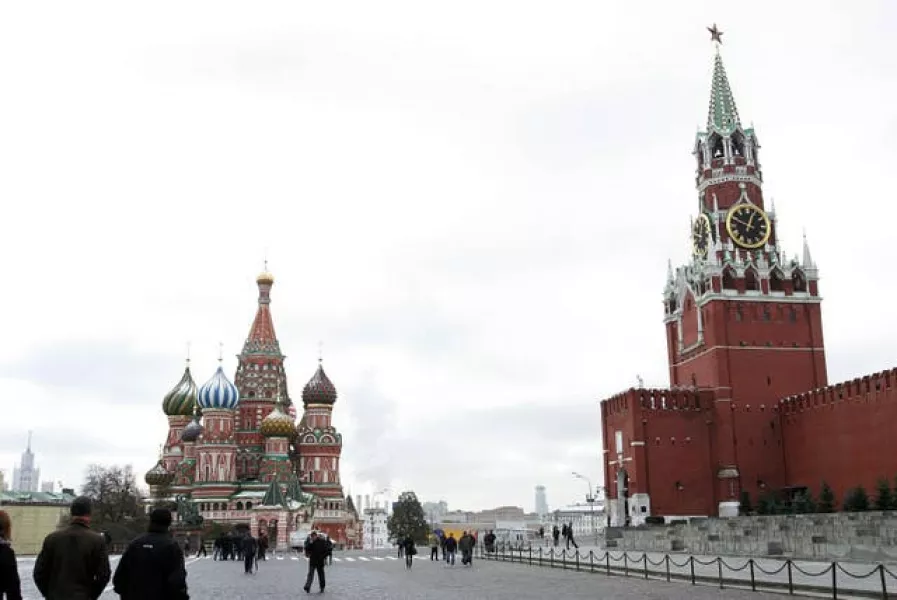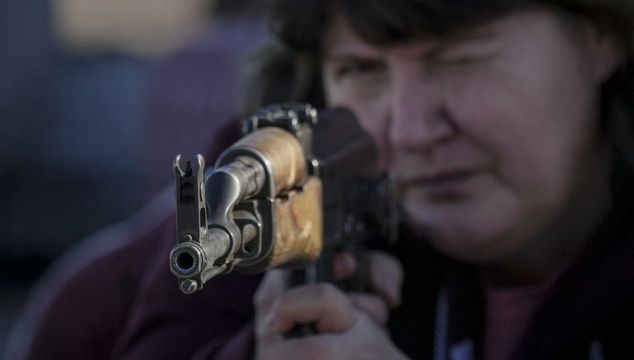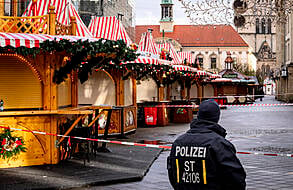The current stand-off between the West and Russia over Ukraine has echoes of the Cold War era when the US and Soviet Union were at loggerheads.
Vladimir Putin has amassed more than 100,000 troops near the border, with the White House warning that an incursion or invasion could occur imminently while Western nations have sent assets towards the region.
Moscow denies any intention to invade.
– Why is Ukraine important to Russia and the West?
Russia and Ukraine were part of the Soviet Union until its break-up at the end of the Cold War and many common links exist between the countries, especially the eastern part of Ukraine.
The western part of the country looks more to the West and the country has large strategic importance.

Russia argues that the West has failed to keep promises not to encroach on its borders and has set a red line on its neighbour joining Nato while the West contends the alliance is open to any country wishing to join.
Any Russian encroachment would heighten fears of some European nations, especially former Soviet nations, about their own security while Russia insists it is threatened by what it considers Nato expansion.
– What is the state of play at the moment?
Western sources believe Russian troops could cross the border imminently, although some have suggested it might occur after the Winter Olympics.
Military equipment has been sent to bolster the Kyiv government as Russian forces mobilise across the border.

Diplomatically, Emmanuel Macron has visited Moscow while German chancellor Olaf Scholz is visiting Kyiv on Monday and Moscow on Tuesday.
Western nationals in Ukraine have been asked by their home governments to leave the country.
Russia denies any intention to cross the border.
Russia, Ukraine and three Nato allies have bases around the strategically significant Black Sea region.

Romania’s neighbour Bulgaria will also welcome Spanish jets to increase the potent presence of the alliance.
In Black Sea waters, warships of Russia’s Baltic and Northern fleets arrived in Sevastopol Bay on the Crimean Peninsula, which Russia annexed in 2014.
That followed what Russia claims was the western-backed ousting of Ukrainian’s Moscow-leaning president Viktor Yanukovych.
Moscow has announced sweeping drills in the Black and Azov Seas in the coming days and closed large areas for commercial shipping, drawing a strong protest from Ukraine.
– What does Russia want?
Russia wants the US and its allies to keep Ukraine and other former Soviet nations from joining Nato, refrain from putting any weapons near Russia, and roll back alliance forces from Eastern Europe.
Washington and Nato reject those demands as “nonstarters”, but they also are offering to discuss possible limits on missile deployments, a greater transparency of military drills and other confidence-building measures.

Mr Putin has yet to deliver Moscow’s formal response to the Western proposals, but he has already described them as secondary and warned that he would not take “no” for an answer on his main demands.
– What plans are there within Ukraine for peace within the factions?
Russia responded to the 2014 ousting in Kyiv of Mr Yanukovych by annexing Ukraine’s Crimean Peninsula and backing a separatist insurgency in the country’s mostly Russian-speaking eastern industrial region known as the Donbas.
Ukrainian troops and volunteer battalions engaged in ferocious and devastating battles with the rebels involving heavy artillery, armour and combat aircraft.
Amid the fighting, Malaysia Airlines Flight 17 was shot down over eastern Ukraine on July 17 2014, killing all 298 people aboard.
An international investigation concluded the jetliner was destroyed by a missile fired from a rebel-controlled area.
This week marks the fifth anniversary since the deployment of #NATO’s multinational battlegroups in the east of the Alliance.
We thank all the men and women in uniform and their families whose service and sacrifice has helped to keep our 30 nations safe#5YearsAsOne #WeAreNATO— NATO (@NATO) February 10, 2022
It said the weapon was brought into Ukraine from a military base in Russia, but Moscow categorically denied any involvement.
Leaders of France and Germany began efforts to negotiate a truce in talks with Russia and Ukraine when they met in Normandy, France, in June 2014, in what became known as the Normandy format.
Even though Western allies will not renounce Nato’s open-door policy, they have no intention to embrace Ukraine or any other ex-Soviet nation anytime soon.
Some analysts floated an idea of a potential moratorium on expanding the alliance.

Another possibility is the “Finlandisation” of Ukraine, meaning that the country would acquire a neutral status, the way Finland did after the Second World War.
The policy helped it maintain friendly ties with the Soviet Union throughout the Cold War.
– What is the Minsk deal?
The 2015 deal brokered by France and Germany, dubbed Minsk II, included an OSCE-monitored cease-fire, a pullback of heavy weapons and foreign fighters from the line of contact and an exchange of prisoners.
In a major diplomatic coup for Russia, the document obliged Ukraine to grant special status to the separatist regions, allowing them to create their own police force and have a say in appointing local prosecutors and judges.
It also required Kyiv to offer a sweeping amnesty for the separatists and negotiate details of holding local elections with rebel leaders.

Ukrainian president Volodymyr Zelensky has noted that he dislikes every point of the Minsk document, a comment that drew a taunting and crude remark from Mr Putin.
“Like it or not, you have to bear with it, my beauty,” Mr Putin quipped, using a coarse verse from Russian folklore.
“You have to fulfil it. It will not work otherwise.”







